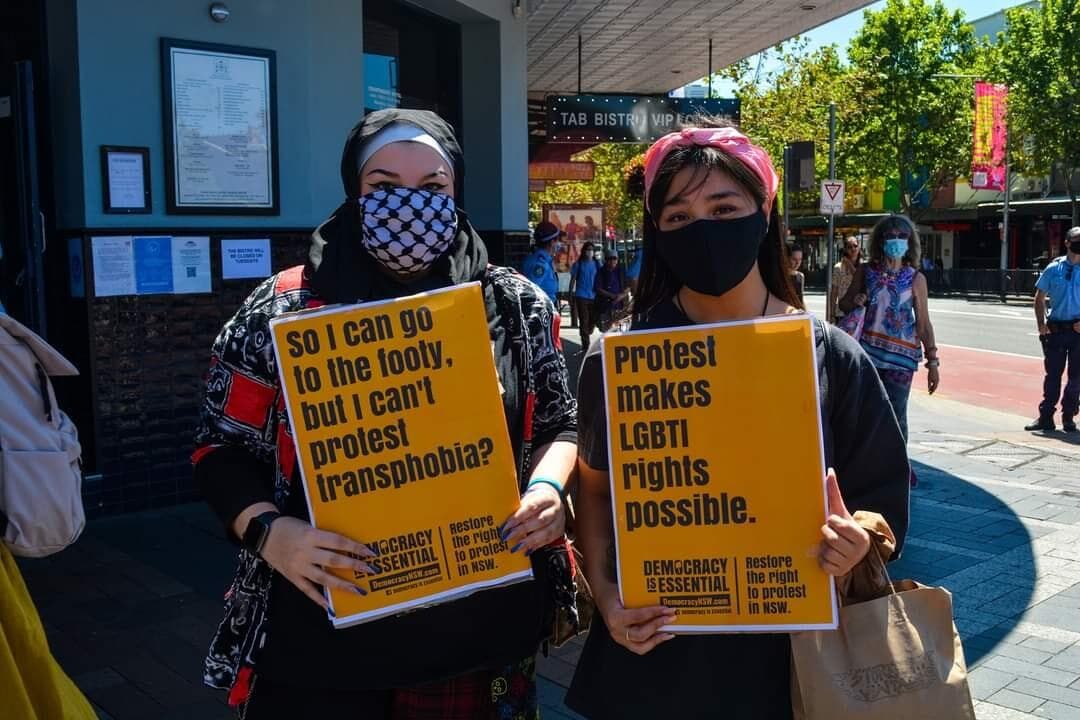Defiant campaign wins concessions on right to protest in NSW

The right to protest campaign in New South Wales has won a significant victory with the state government conceding that demonstrations of up to 500 people are now allowed.
For most of this year, protests about everything from Black Lives Matter to education cuts and LGBTI rights have been broken up by riot police and activists have collectively been fined more than $50,000 for organising or attending them. The government backdown exposes that the police’s claim that protests constituted a public health risk was always bogus, and that the anti-democratic measures were a politically motivated manoeuvre by the police and Liberal state government to crush dissent.
There are still some limitations on the right to protest that should be scrapped, including the cap of 500 attendees. Considering 40,000 people are currently allowed to attend sporting events in New South Wales, a riskier undertaking than protest, this limitation is clearly motivated by politics, not public health. There is also still a fight to overturn the fines accrued by activists as a result of the previous measures.
Nevertheless, the victory is important. It is a credit to those who recognised the need to resist the anti-democratic measures rather than just ignore them. It also provides vindication for the position advocated by Democracy is Essential activists and their supporters—that the ban on protest needed to be defied rather than accommodated to.
These concessions came about only because activists repeatedly demonstrated their willingness to defy the measures, even in the face of escalating police attacks. At a student rally on 14 October, for example, riot police assaulted students, rode police horses into crowds and imposed hefty fines on participants.
Sydney University law professor Simon Rice, who was merely observing the protest, was kicked to the ground by the police and fined $1,000. A video showing University of New South Wales education officer Shovan Bhattarai being shoved violently by a swarm of police was viewed more than 100,000 times. This created significant concern among staff and students on campuses, even compelling University of Sydney management to issue a statement distancing itself from the police.
Four days earlier, there had been dramatic scenes as riot police broke up a LGBTI rights rally organised by Community Action for Rainbow Rights. Dozens of activists were dragged away after organisers refused to cancel the action in response to the Supreme Court endorsing the police’s position that the protest was unlawful.
This kind of defiance was key to putting the state government and the police under pressure. It was only after these two rallies that the issue started to be picked up in the national press. This shouldn’t come as a surprise—the right to protest only ever becomes an issue when people trying to protest encounter anti-democratic repression from the authorities. This not only highlights to greater numbers of people the erosion of rights that is going on, but also compels them to take a side and drives opposition to the police and government.
To cement and expand upon this victory, the strategy of defiant street protests must continue.